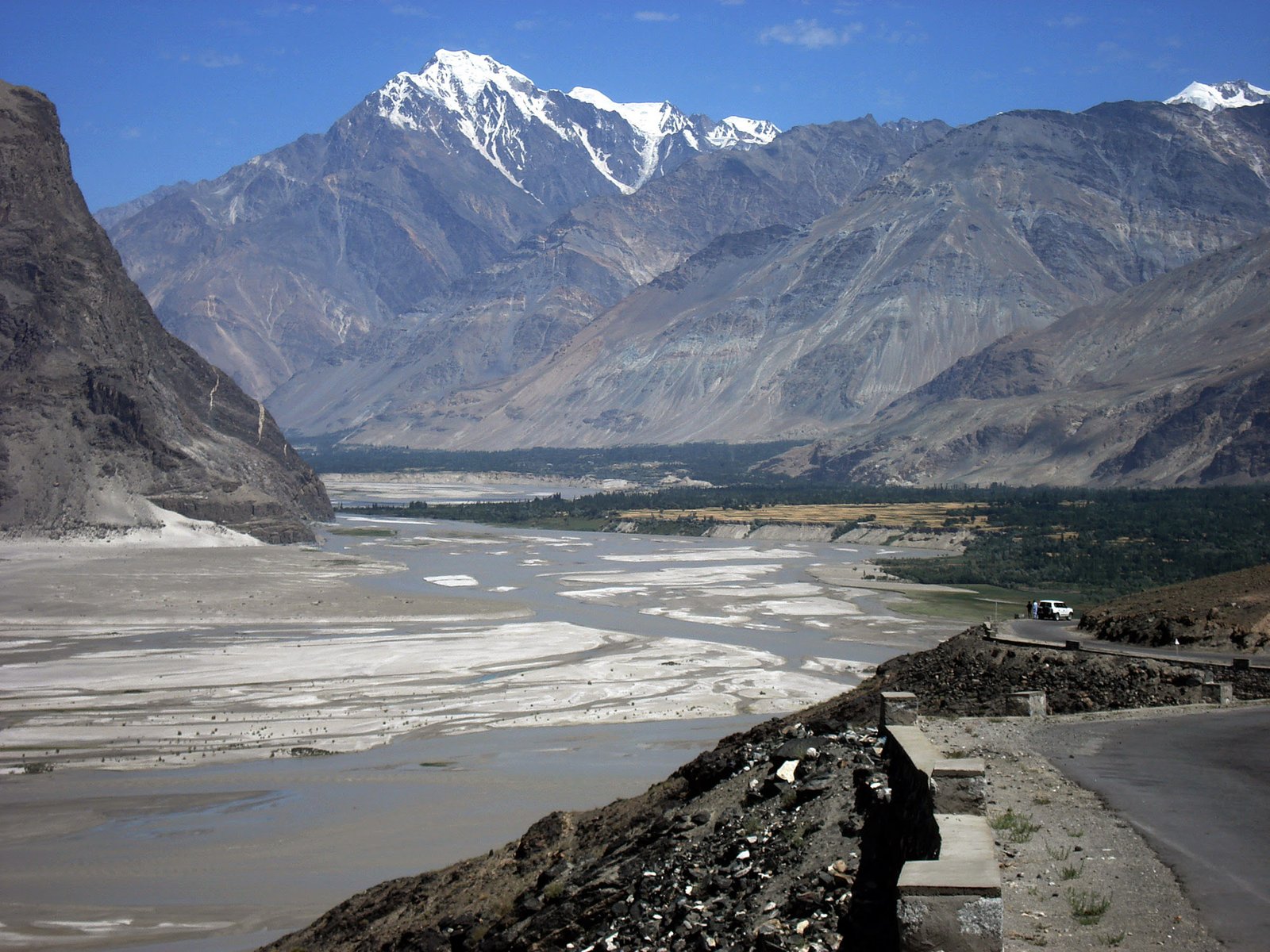 Wide Indus valley at Skardu. Birendra Bajracharya
Wide Indus valley at Skardu. Birendra Bajracharya
Researchers have ranked the world’s most important, most threatened mountain water towers, provide new insight on mountain glacier–derived water resource systems, impacting up to 1.9 billion people globally
Herald Report
Global mountain water towers are at risk, in many cases critically, due to the threats of climate change, growing populations, mismanagement of water resources, and other geopolitical factors, says the latest research report.
Scientists from around the world have assessed the planet’s 78 mountain glacier-based water systems and, for the first time, ranked them in order of their importance to adjacent lowland communities, as well as their vulnerability to future environmental and socioeconomic changes, according to a press statement issued by the Kathmandu-based International Centre for Integrated Mountain Development (ICIMOD) which coincides with the launch of an academic paper in Nature on Monday.
 Two women tend their potato field in the Chipursan valley, Gojal, Hunza, Gilgit-Baltistan. This region is part of the Indus water tower, which, according to research supported by the National Geographic and Rolex Perpetual Planet partnership, is the most relied-upon glacier-based water system in the world .Learn more at natgeo.com/Perpetual Planet. Photo by Matthew Paley, National Geographic.
Two women tend their potato field in the Chipursan valley, Gojal, Hunza, Gilgit-Baltistan. This region is part of the Indus water tower, which, according to research supported by the National Geographic and Rolex Perpetual Planet partnership, is the most relied-upon glacier-based water system in the world .Learn more at natgeo.com/Perpetual Planet. Photo by Matthew Paley, National Geographic.
According to the research paper titled “The Importance and Vulnerability of the World’s Water Towers” by Walter Immerzeel, Arthur Lutz, et al, these systems, known as mountain water towers, store and transport the most important commodity via glaciers, snowpacks, lakes, and streams, thereby supplying invaluable water resources to 1.9 billion people globally — roughly a quarter of the world’s population.
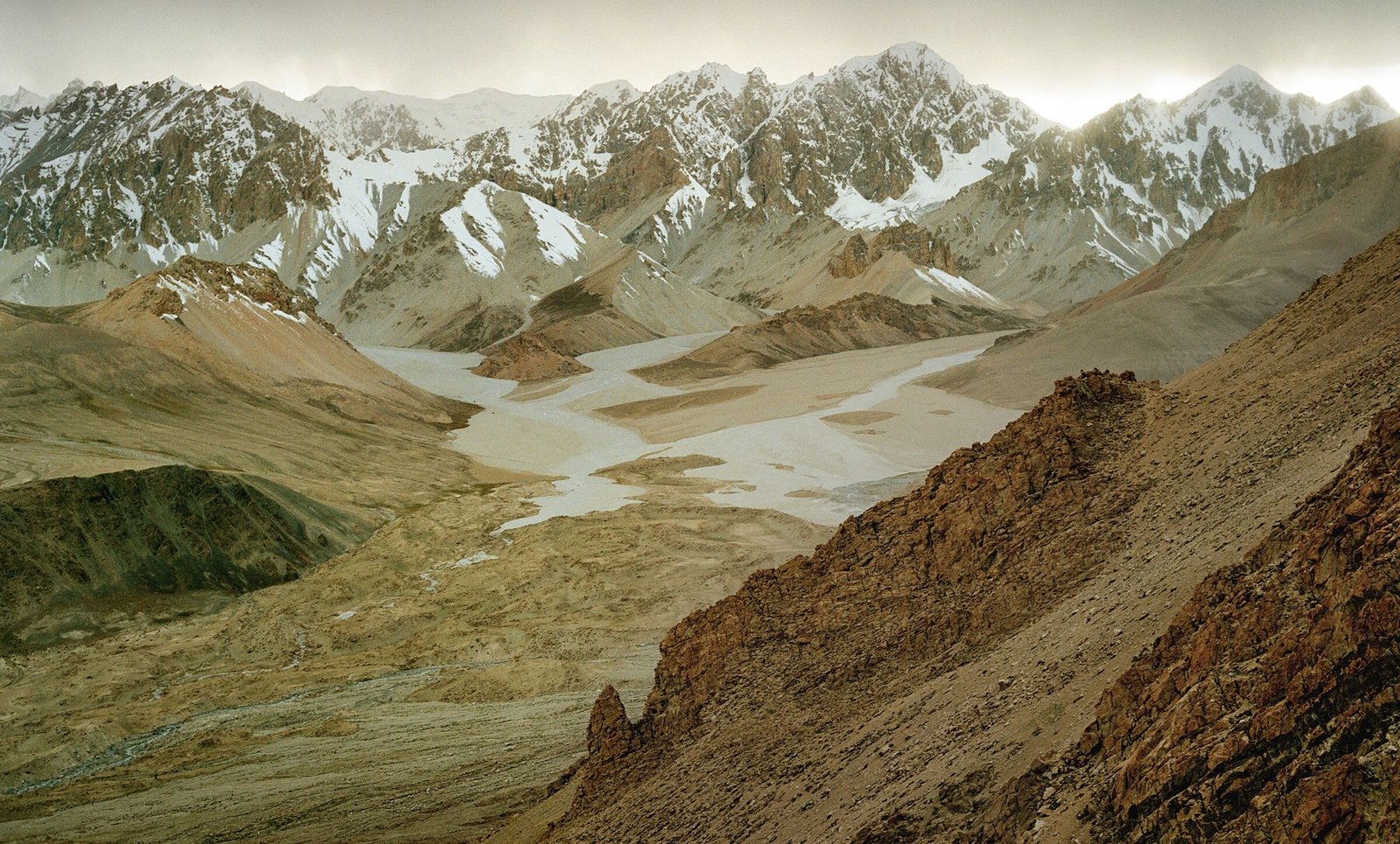 View over the Shimshal Pamir region of Gojal, Hunza. This region is part of the Indus water tower, which, according to research supported by the National Geographic and Rolex Perpetual Planet partnership, is the most relied-upon glacier-based water systems in the world. Learn more atnatgeo.com/Perpetual Planet. Photo by Matthew Paley, National Geographic.
View over the Shimshal Pamir region of Gojal, Hunza. This region is part of the Indus water tower, which, according to research supported by the National Geographic and Rolex Perpetual Planet partnership, is the most relied-upon glacier-based water systems in the world. Learn more atnatgeo.com/Perpetual Planet. Photo by Matthew Paley, National Geographic.
The authors of the research, published in the prestigious scientific journal Nature, concluded that it is essential to develop international, mountain-specific conservation and climate change adaptation policies and strategies to safeguard both ecosystems and people downstream, the statement read.
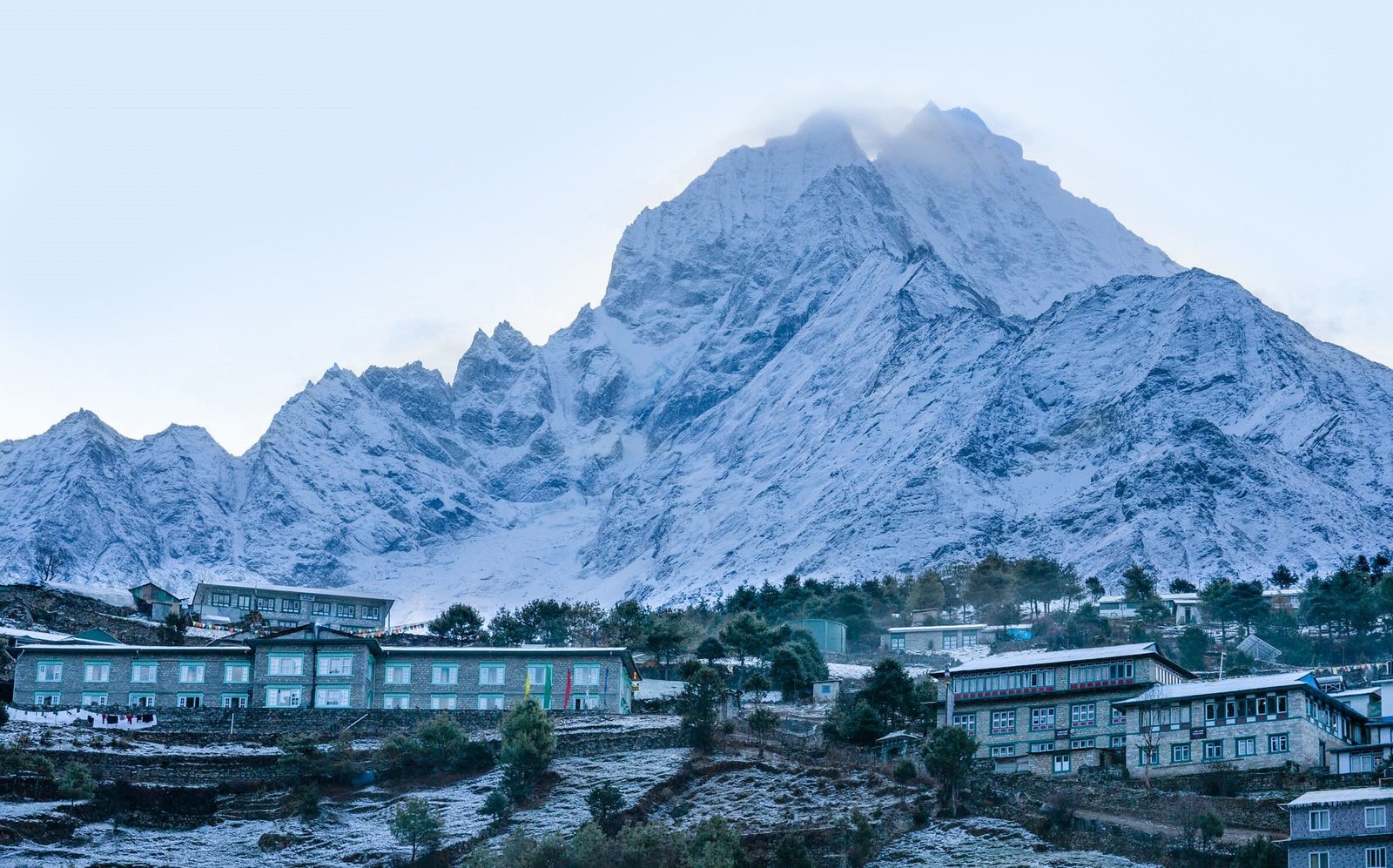 The village of Khumjung, Nepal, beneath Khumbu Yui Lha, one of the high mountains of the Eastern Himalaya. New research supported by National Geographic and Rolex’s Perpetual Planet partnership highlights the importance and vulnerability of the world’s glacier-based water systems, including this region’s Ganges-Brahmaputra water tower, that communities like this relyupon. Learn more at natgeo.com/Perpetual Planet. Photo by Brittany Mumma, National Geographic.
The village of Khumjung, Nepal, beneath Khumbu Yui Lha, one of the high mountains of the Eastern Himalaya. New research supported by National Geographic and Rolex’s Perpetual Planet partnership highlights the importance and vulnerability of the world’s glacier-based water systems, including this region’s Ganges-Brahmaputra water tower, that communities like this relyupon. Learn more at natgeo.com/Perpetual Planet. Photo by Brittany Mumma, National Geographic.
ICIMOD is a regional knowledge development and learning centre serving the eight regional member countries of the Hindu Kush Himalaya (HKH) – Afghanistan, Bangladesh, Bhutan, China, India, Myanmar, Nepal, and Pakistan – and supporting regional transboundary programmes.
Globally, the most relied-upon mountain system is the Indus water tower in Asia, according to the research. The Indus water tower — made up of vast areas of the Himalayan mountain range and covering portions of Afghanistan, China, India, and Pakistan — is also one of the most vulnerable.
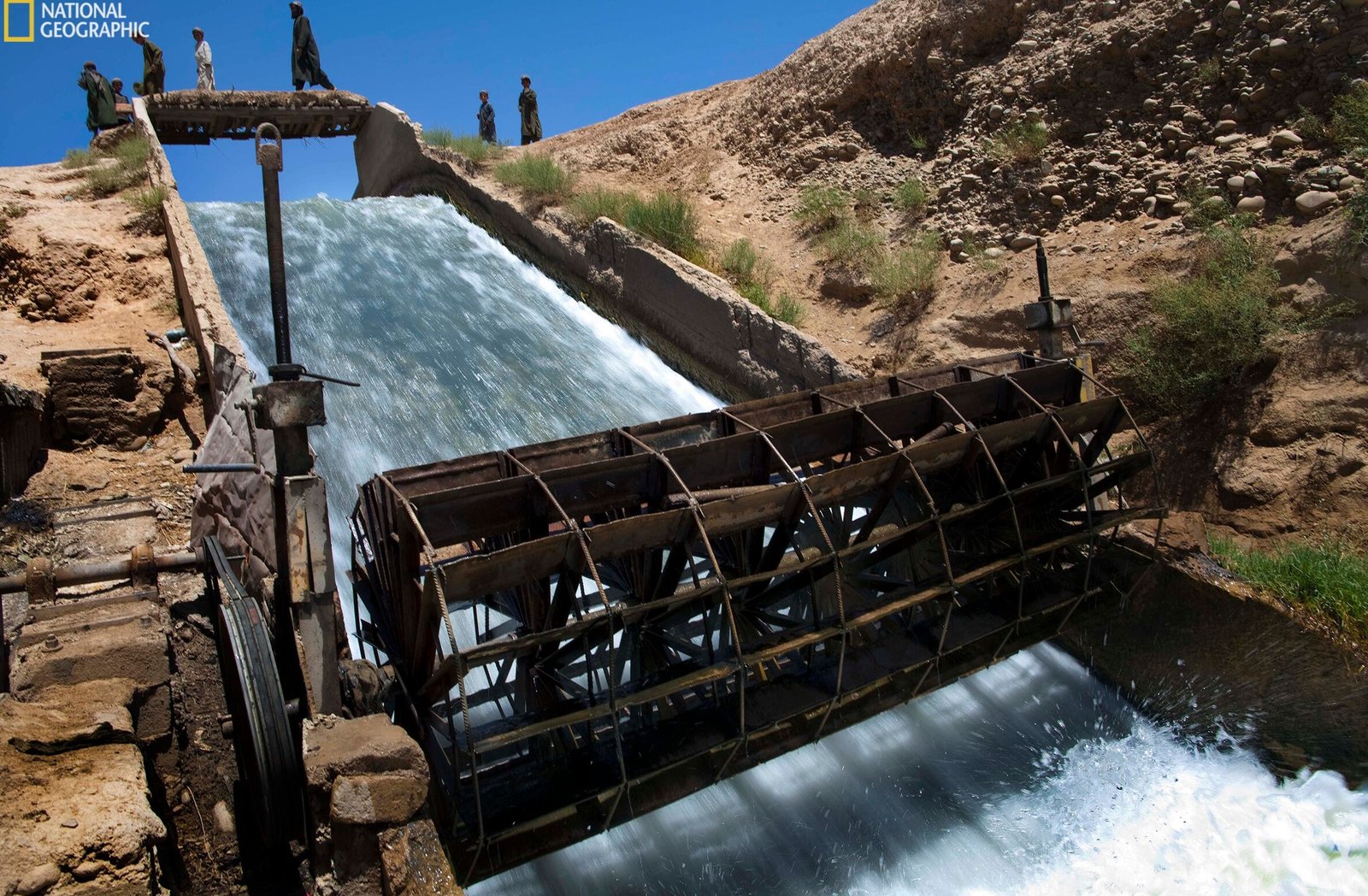 Irrigation sluices like this one are used by farmers in the Marjah district of Afghanistan. Many in the region rely on water from nearby glaciers for agriculture and more, but increasingly those resources are at risk. This region’s Helmand water tower is the most vulnerable in the world. Learn more about the threats facing the world’s water towers by visitingnatgeo.com/Perpetual Planet. Photo by David Guttenfelder/AP, National Geographic.
Irrigation sluices like this one are used by farmers in the Marjah district of Afghanistan. Many in the region rely on water from nearby glaciers for agriculture and more, but increasingly those resources are at risk. This region’s Helmand water tower is the most vulnerable in the world. Learn more about the threats facing the world’s water towers by visitingnatgeo.com/Perpetual Planet. Photo by David Guttenfelder/AP, National Geographic.
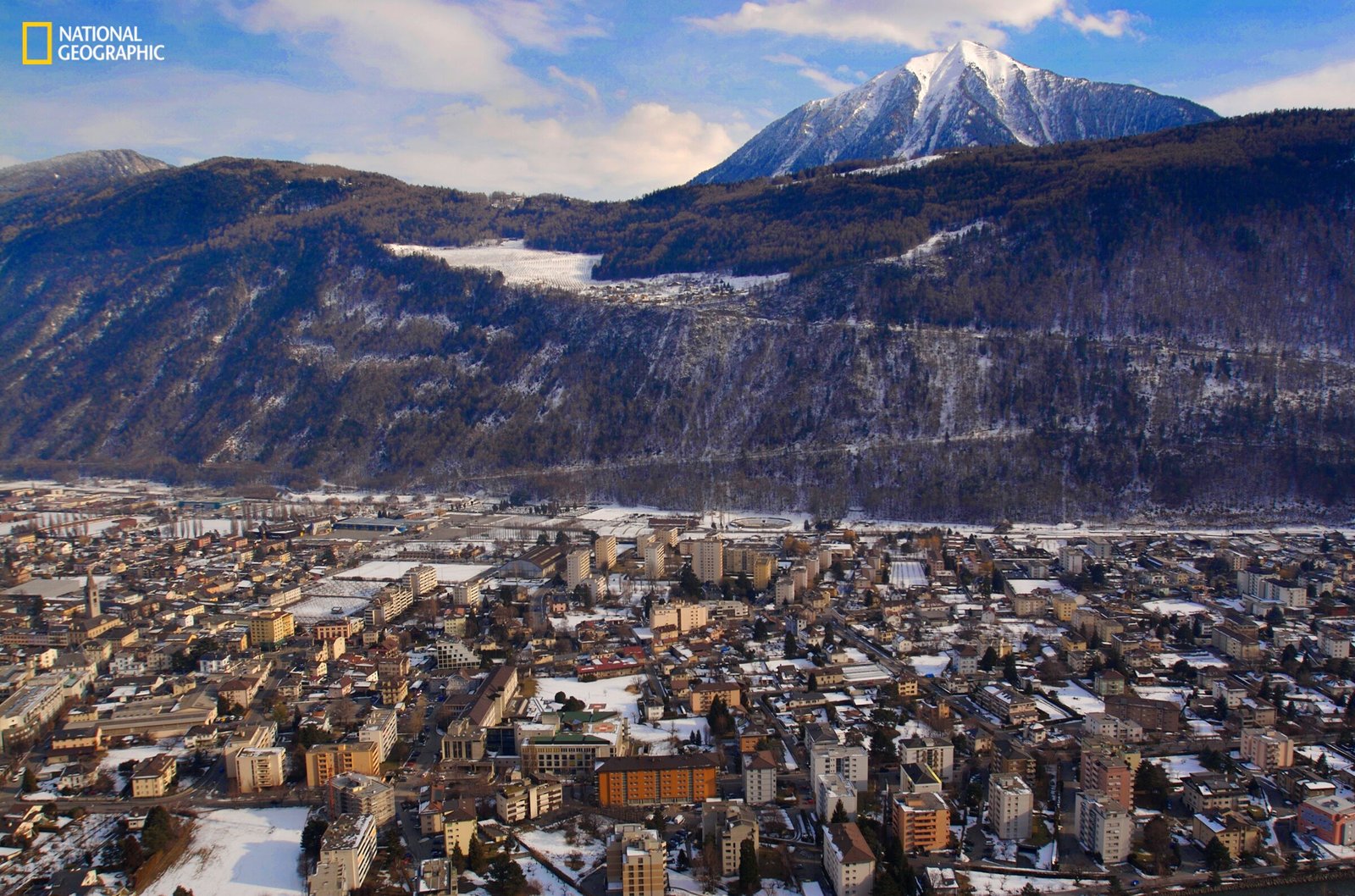
Martigny is one of many towns located in the valleys of the Swiss Alps. This region’s water tower is one of the most relied-upon in Europe according to new research supported by National Geographic and Rolex’s Perpetual Planet partnership. Learn more atnatgeo.com/Perpetual Planet. Photo by Melissa Farlow, National Geographic.
High-ranking water tower systems on other continents are the southern Andes, the Rocky Mountains, and the European Alps.
To determine the importance of these 78 water towers, researchers analyzed the various factors that determine how reliant downstream communities are upon the supplies of water from these systems. They also assessed each water tower to determine the vulnerability of the water resources, as well as the people and ecosystems that depend on them, based on predictions of future climate and socioeconomic changes.
Of the 78 global water towers identified, the following are the five most relied-upon systems by continent:
- Asia: Indus, Tarim, Amu Darya, Syr Darya, Ganges-Brahmaputra
- Europe: Rhône, Po, Rhine, Black Sea North Coast, Caspian Sea Coast
- North America: Fraser, Columbia and Northwest United States, Pacific and Arctic Coast, Saskatchewan-Nelson, North America-Colorado
- South America: South Chile, South Argentina, Negro, La Puna region, North Chile
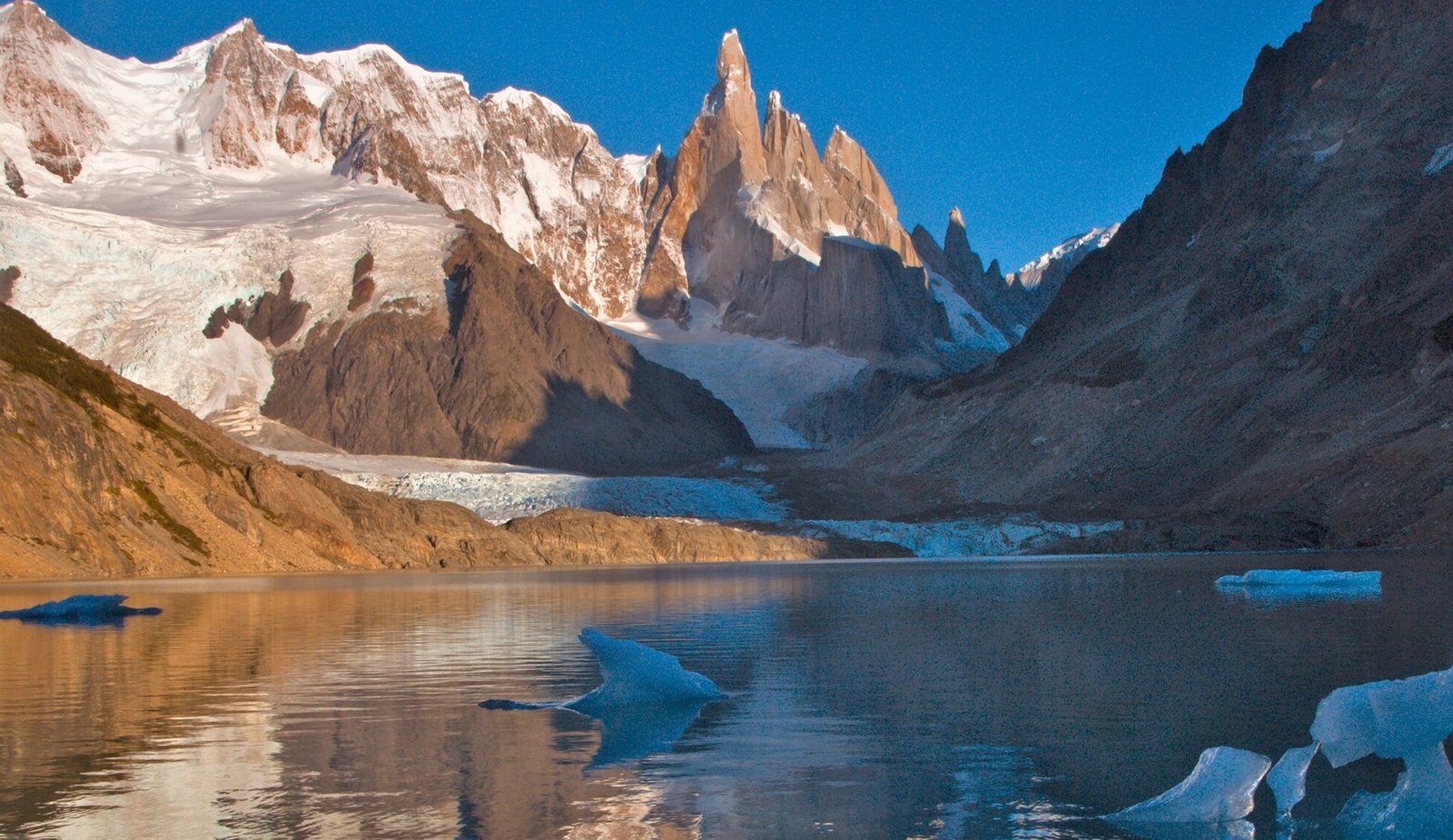 Beth Wald National Geographic Glaciers covering the Adela and Cerro Torre massifs are reflected in the Laguna Torre, a glacial lake in Los Glacieres National Park. The South Chile water tower is the most relied-upon water tower in South America, according to new research supported by National Geographic and Rolex’s Perpetual Planet partnership. Learn more at natgeo.com/Perpetual Planet. Photo by Beth Wald, National Geographic.
Beth Wald National Geographic Glaciers covering the Adela and Cerro Torre massifs are reflected in the Laguna Torre, a glacial lake in Los Glacieres National Park. The South Chile water tower is the most relied-upon water tower in South America, according to new research supported by National Geographic and Rolex’s Perpetual Planet partnership. Learn more at natgeo.com/Perpetual Planet. Photo by Beth Wald, National Geographic.
The study, which was authored by 32 scientists from around the world, was led by Prof. Walter Immerzeel and Dr. Arthur Lutz of Utrecht University, longtime researchers of water and climate change in high mountain Asia.
 Farmers tend to their fields high in the Peruvian Andes. New research supported by National Geographic and Rolex’s Perpetual Planet partnership highlights the importance and vulnerability of the world’s glacier-based water systems, including the northern Andes, where mountain-derived water is critically required for irrigating crops. Learn more atnatgeo.com/Perpetual Planet. Photo by Lynn Johnson, National Geographic.
Farmers tend to their fields high in the Peruvian Andes. New research supported by National Geographic and Rolex’s Perpetual Planet partnership highlights the importance and vulnerability of the world’s glacier-based water systems, including the northern Andes, where mountain-derived water is critically required for irrigating crops. Learn more atnatgeo.com/Perpetual Planet. Photo by Lynn Johnson, National Geographic.
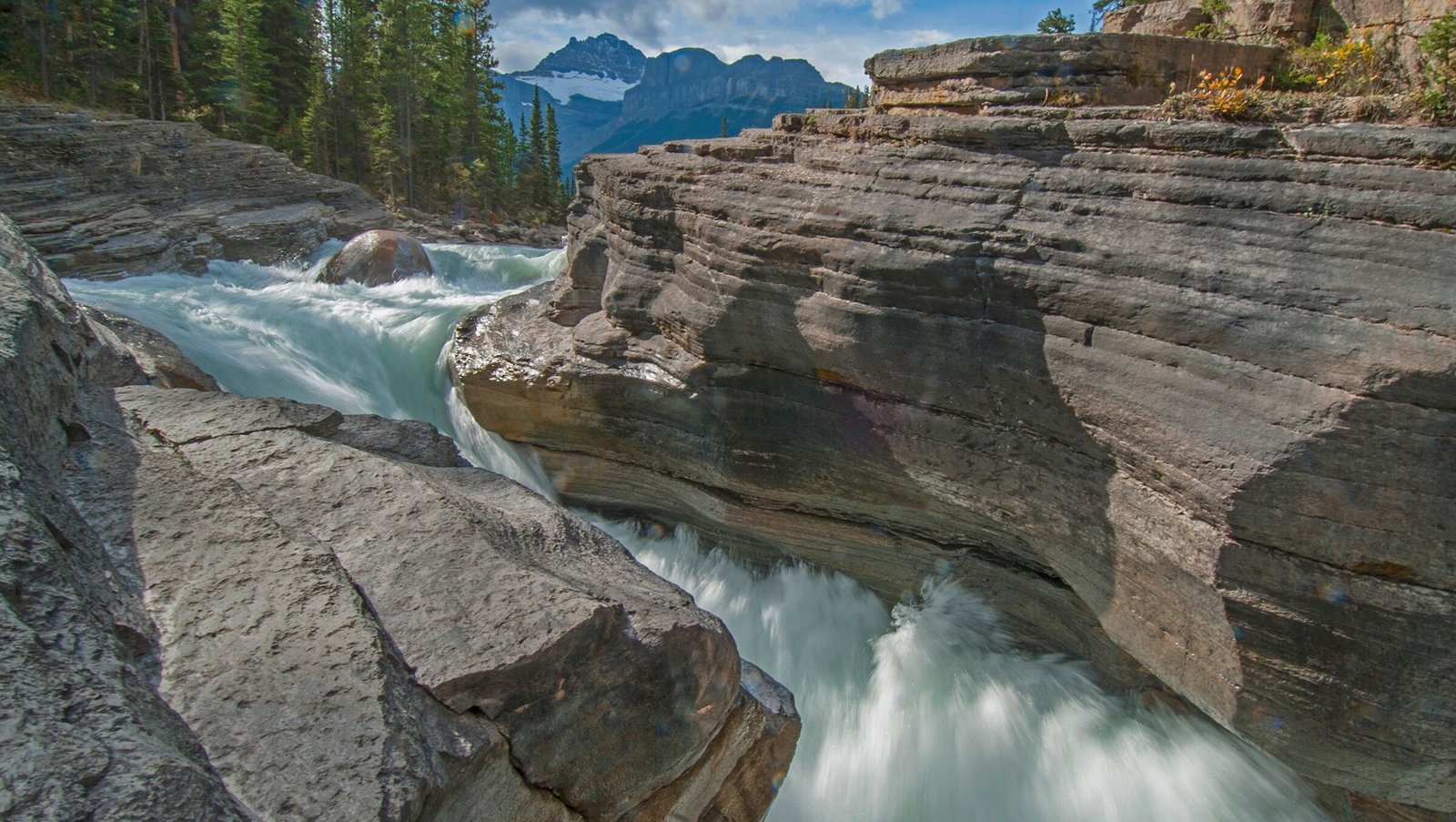 The Mistaya River courses through Mistaya Canyon in Canada’s Rocky Mountains. This region is one of the most relied-upon water towers in North America, according to new research supported by National Geographic and Rolex’s Perpetual Planet partnership highlighting the importance and vulnerability of the world’s glacier-based water systems. Learn more atnatgeo.com/Perpetual Planet. Photo by Gordon Wiltsie, National Geographic.
The Mistaya River courses through Mistaya Canyon in Canada’s Rocky Mountains. This region is one of the most relied-upon water towers in North America, according to new research supported by National Geographic and Rolex’s Perpetual Planet partnership highlighting the importance and vulnerability of the world’s glacier-based water systems. Learn more atnatgeo.com/Perpetual Planet. Photo by Gordon Wiltsie, National Geographic.
“What is unique about our study is that we have assessed the water towers’ importance, not only by looking at how much water they store and provide but also how much mountain water is needed downstream and how vulnerable these systems and communities are to a number of likely changes in the next few decades,” said Immerzeel. Lutz added, “By assessing all glacial water towers on Earth, we identified the key basins that should be on top of regional and global political agendas.”
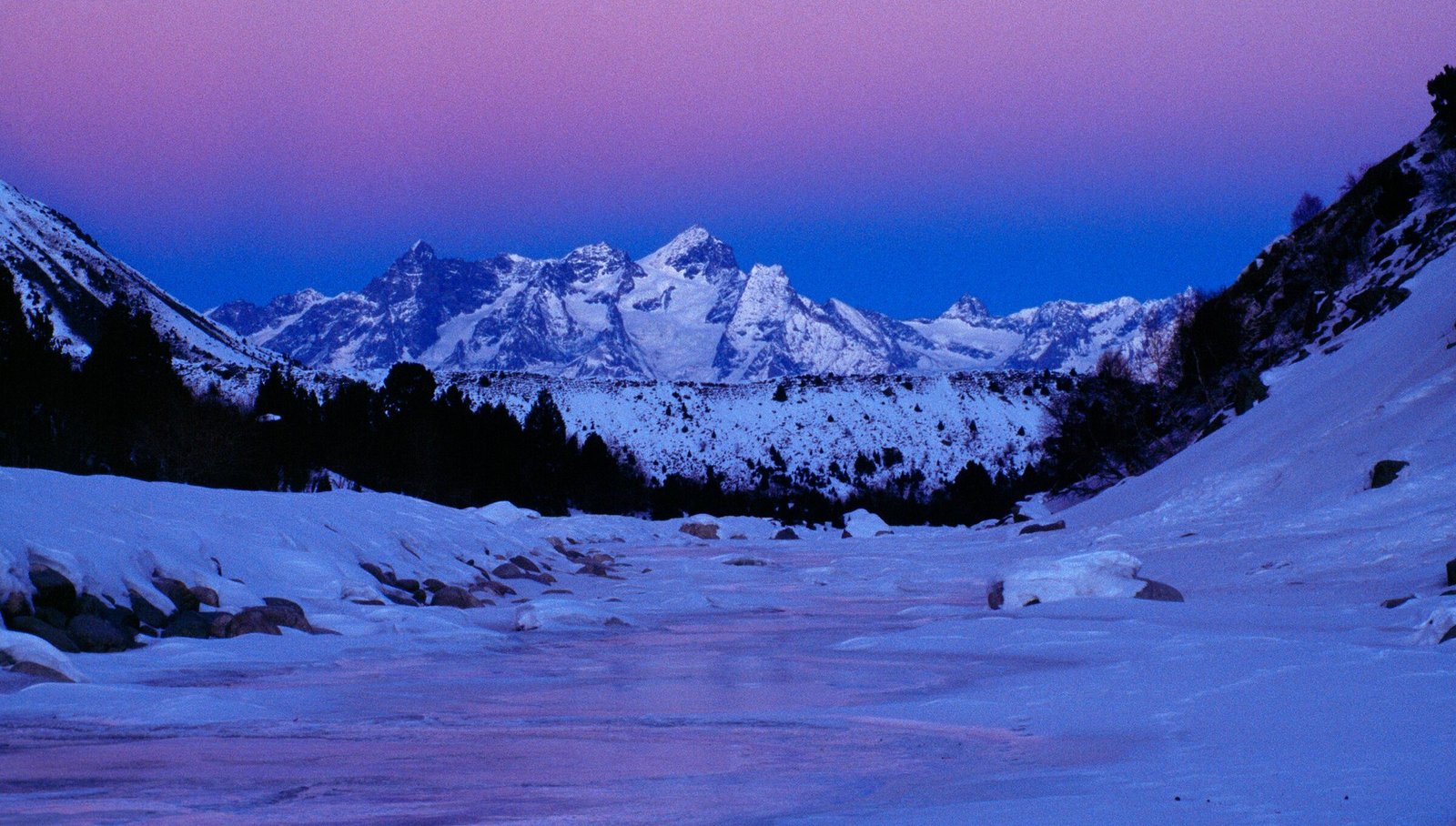 View down a glacial valley towards the small mountain town of Val-d’Isere in the French Alps. This region’s water tower is one of the most relied-upon in Europe, according to new research supported by National Geographic and Rolex’s Perpetual Planet partnership highlighting the importance and vulnerability of the world’s glacier-based water systems. Photo by Keith Ladzinski, National Geographic.
View down a glacial valley towards the small mountain town of Val-d’Isere in the French Alps. This region’s water tower is one of the most relied-upon in Europe, according to new research supported by National Geographic and Rolex’s Perpetual Planet partnership highlighting the importance and vulnerability of the world’s glacier-based water systems. Photo by Keith Ladzinski, National Geographic.
Arun B. Shrestha, who leads the River Basins and Cryosphere Programme at ICIMOD, as well as co-author of the report, said “Taking forward the findings of the Hindu Kush Himalaya Assessment report, this study showcases the vulnerability of river basins that are fed by mountain catchments. The study has found the Hindu Kush Himalaya (HKH) river basins to be increasingly vulnerable, and implies the need for global attention to building resilience in these basins.”
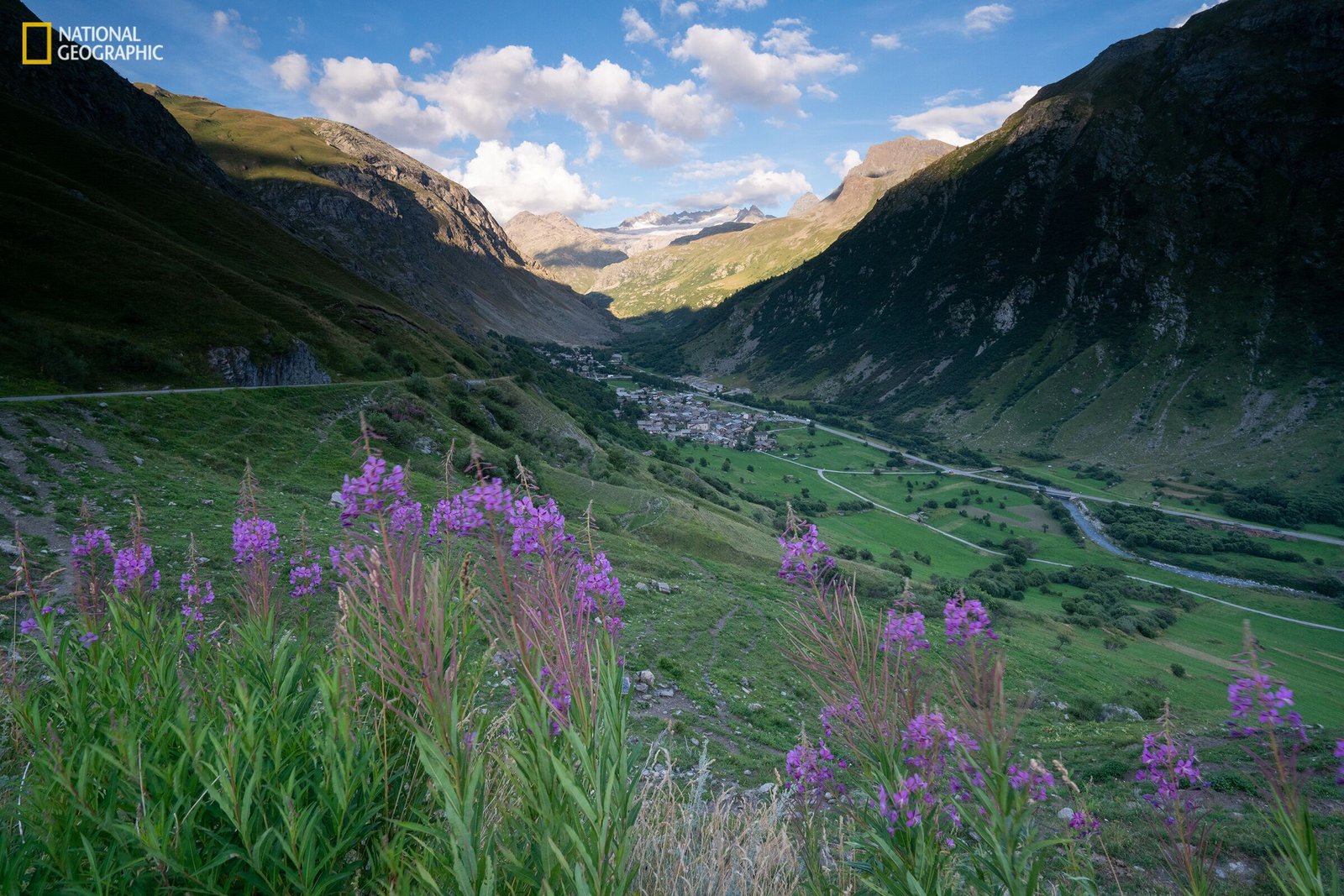
Likewise, Santosh Nepal, water and climate specialist at ICIMOD, and also a co-author highlighted, “Four out of the five most relied-upon and vulnerable water towers in all of Asia are located in the HKH region. Even when we assess at a global scale, the Indus, in particular, is one of the most critical and vulnerable water towers in the world. This is something the region as a whole needs to take seriously and work on addressing collectively.”
This research was supported by National Geographic and Rolex as part of their Perpetual Planet partnership, which aims to shine a light on the challenges facing the Earth’s critical life-support systems, support science and exploration of these systems, and empower leaders around the world to develop solutions to protect the planet.
“Mountains are iconic and sacred places around the world, but the critical role they play in sustaining life on Earth is not well understood,” said Jonathan Baillie, executive vice president and chief scientist at the National Geographic Society. “This research will help decision-makers, on global and local levels, prioritize where action should be taken to protect mountain systems, the resources they provide, and the people who depend on them.”

The High Asia Herald is a member of High Asia Media Group — a window to High Asia and Central Asia
